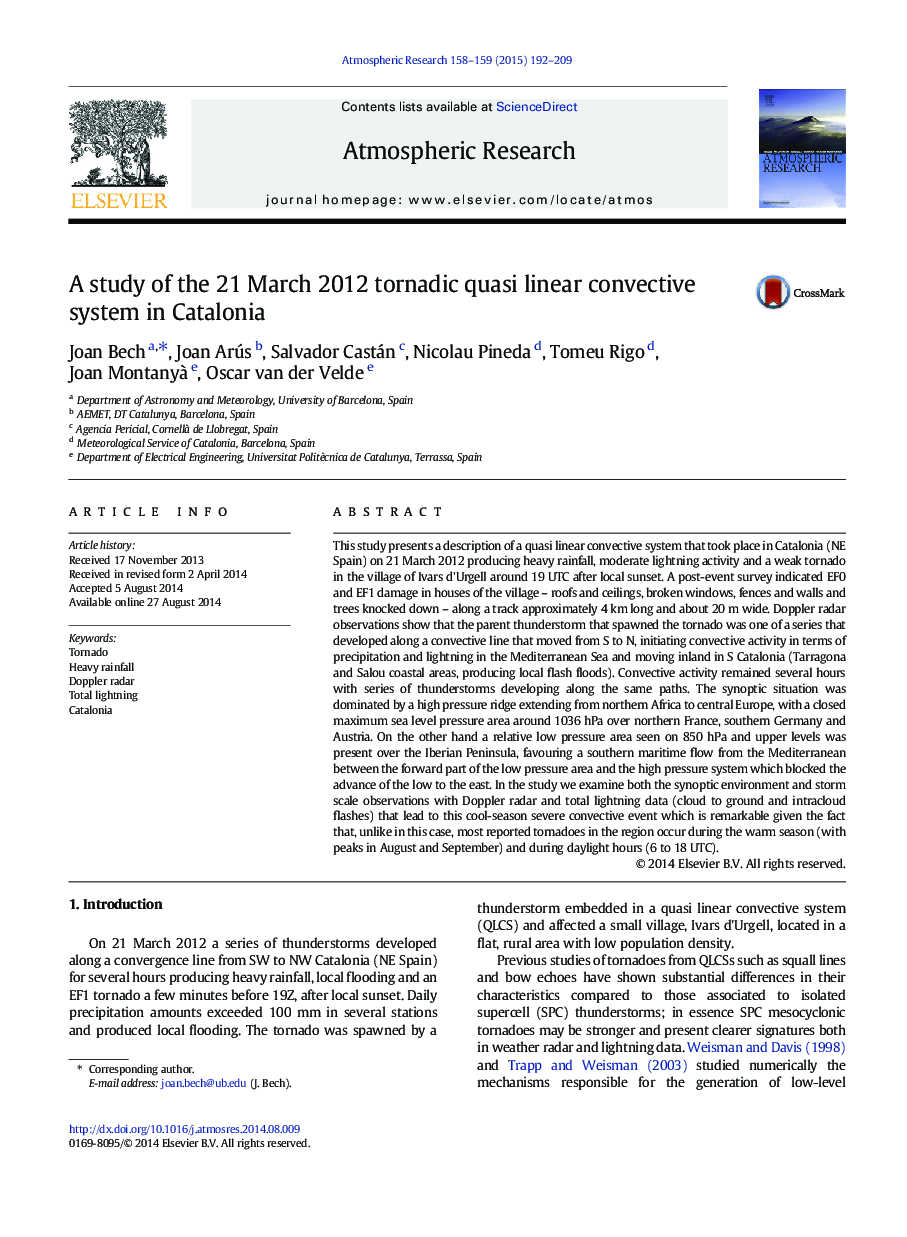| کد مقاله | کد نشریه | سال انتشار | مقاله انگلیسی | نسخه تمام متن |
|---|---|---|---|---|
| 6343307 | 1620515 | 2015 | 18 صفحه PDF | دانلود رایگان |
عنوان انگلیسی مقاله ISI
A study of the 21 March 2012 tornadic quasi linear convective system in Catalonia
ترجمه فارسی عنوان
مطالعهی سیستم کانوا شبه خطی تونادیک 21 مارس 2012 در کاتالونیا
دانلود مقاله + سفارش ترجمه
دانلود مقاله ISI انگلیسی
رایگان برای ایرانیان
کلمات کلیدی
گردباد بارش سنگین، رادار داپلر، مجموع رعد و برق، کاتالونیا،
موضوعات مرتبط
مهندسی و علوم پایه
علوم زمین و سیارات
علم هواشناسی
چکیده انگلیسی
This study presents a description of a quasi linear convective system that took place in Catalonia (NE Spain) on 21 March 2012 producing heavy rainfall, moderate lightning activity and a weak tornado in the village of Ivars d'Urgell around 19 UTC after local sunset. A post-event survey indicated EF0 and EF1 damage in houses of the village - roofs and ceilings, broken windows, fences and walls and trees knocked down - along a track approximately 4Â km long and about 20Â m wide. Doppler radar observations show that the parent thunderstorm that spawned the tornado was one of a series that developed along a convective line that moved from S to N, initiating convective activity in terms of precipitation and lightning in the Mediterranean Sea and moving inland in S Catalonia (Tarragona and Salou coastal areas, producing local flash floods). Convective activity remained several hours with series of thunderstorms developing along the same paths. The synoptic situation was dominated by a high pressure ridge extending from northern Africa to central Europe, with a closed maximum sea level pressure area around 1036Â hPa over northern France, southern Germany and Austria. On the other hand a relative low pressure area seen on 850Â hPa and upper levels was present over the Iberian Peninsula, favouring a southern maritime flow from the Mediterranean between the forward part of the low pressure area and the high pressure system which blocked the advance of the low to the east. In the study we examine both the synoptic environment and storm scale observations with Doppler radar and total lightning data (cloud to ground and intracloud flashes) that lead to this cool-season severe convective event which is remarkable given the fact that, unlike in this case, most reported tornadoes in the region occur during the warm season (with peaks in August and September) and during daylight hours (6 to 18 UTC).
ناشر
Database: Elsevier - ScienceDirect (ساینس دایرکت)
Journal: Atmospheric Research - Volumes 158â159, 1â15 May 2015, Pages 192-209
Journal: Atmospheric Research - Volumes 158â159, 1â15 May 2015, Pages 192-209
نویسندگان
Joan Bech, Joan Arús, Salvador Castán, Nicolau Pineda, Tomeu Rigo, Joan Montanyà , Oscar van der Velde,
